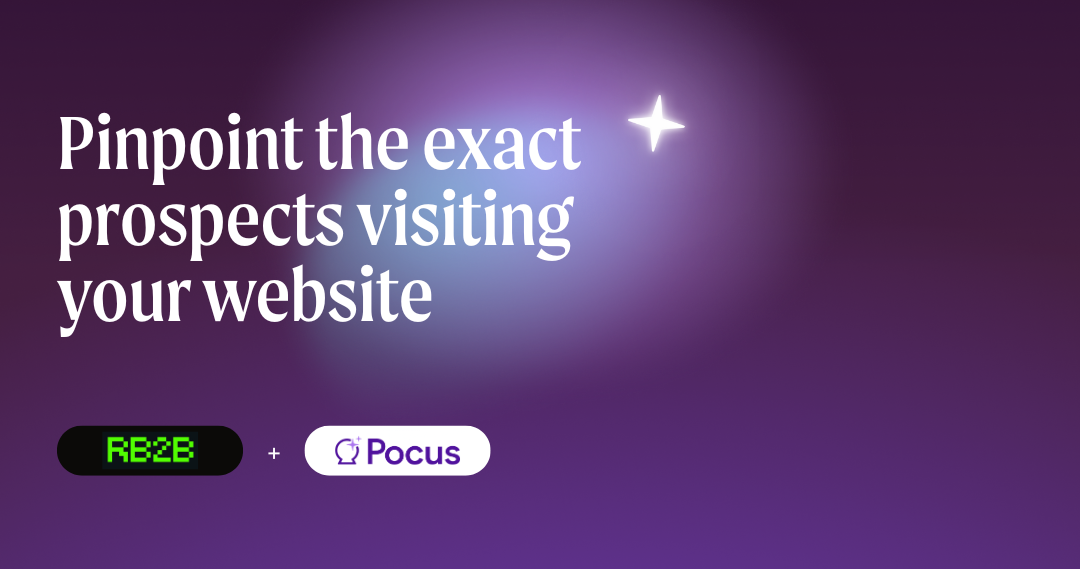Pocus hosts “Ask Me Anything” sessions with GTM experts to share best practices, frameworks, and insights on this emerging category. These AMAs are an opportunity to ask leaders any question — ranging from hiring to sales compensation to tech stack — in a low-key, casual environment.
The AMAs are for members of the Pocus Go-To-Market Community, the place to learn, discuss, and connect with go-to-market (GTM) leaders at product-led companies. The goal of the community is to bring together the most thoughtful and innovative GTM leaders to build the next generation of sales together.
Interested in joining? Request an invite here.
Meet Alex Kracov, CEO and Co-Founder of Dock 👋
Alex Kracov knew in college that he wanted to be a founder and entrepreneur, but received advice from a cousin in venture capital to get career experience at an established company first to develop business skills before striking out on his own. With that advice in mind, Alex gained experience in sales as an SDR at Yelp before moving into marketing at the adtech company Blue State Digital. Eager to experience a small-scale startup, Alex joined Lattice as employee #3 and founding marketer where he helped grow the company from $0 in ARR to over $50M, as well as built out the marketing team over the course of his five-year tenure. While at Lattice, Alex noticed that there was a need for a tool to help revenue teams collaborate better together, leading him to finally found his own company, Dock.
We recently sat down with Alex for a Pocus Community AMA to learn more about his experiences building out marketing at Lattice, then co-founding Dock. In our AMA we covered:
- Alex’s proven approach to building a GTM motion from scratch
- How to create an effective partnership between sales and marketing
- Alex’s top piece of advice to fellow founders and early-stage hires
Building a GTM motion from scratch
Joining Lattice in its infancy was a formative career experience for Alex. When he joined as the third employee, the company was still rapidly iterating on its product and looking for market fit. What first started as a goal and OKR tracker transformed over time into a holistic performance management and review tool.
Being in such an experiment-focused environment helped Alex learn quickly. He spent the first year “just figuring things out,” learning how to market a B2B SaaS product and testing various GTM strategies. Alex tried everything from AdWords and retargeting campaigns to sponsoring conference booths and hosting webinars, experimenting to find what performed best against their goals of growth and brand awareness. While growing Lattice from $0 to $50M in ARR, Alex learned three key lessons:
- There’s no one “right” channel or strategy. Alex discovered that there’s no singular path to success. Almost any channel will produce results if you commit to it and build on your momentum. The key is keeping a singular focus rather than jumping from channel to channel in search of a magic growth source.
“The dirty secret in marketing is that it all actually works, it’s comes down to whether you put the time and effort into it. You need to slowly build, compound, and invest to see the results.”
- Look for quantitative data, but don’t ignore qualitative feedback. In an ideal world, every marketing campaign is completely measurable and all conversions can be attributed back to a single touchpoint. In reality, not so much. Only about 30% of Lattice’s marketing efforts were truly trackable, but using qualitative feedback helped guide early decision-making.
“With Google AdWords it’s really clear to see a lead came in and what happened with that lead. Whereas we were early in the B2B podcast game with the Resources for Humans podcast and the success there was more of a ‘vibe.’ We would get tons of qualitative feedback from people about it that it helped elevate the brand.”
- Align your metrics to your goals. As the old saying goes, measure what matters. Alex recommends mapping your customer journey and assigning checkpoints along the way to assess strategy effectiveness. Metrics like branded search volume may not tie back to one specific campaign but will give you an overall sense of whether your marketing efforts are paying off.
“First, I like to measure how we're doing in a specific channel. And then I look at the overall mix of marketing and ask are we increasing pipeline? Are we increasing revenue at the company? Then get feedback from your sales team on where your customers are finding you.”
For a more detailed breakdown of this approach to layering experimentation into your GTM strategy check out our recent blog post.
Creating real partnership between sales and marketing
One of the most common issues faced by high-growth startups like Lattice or Dock is the shift from a small, singular team to structured departments with individual goals. This change can lead to the classic “sales vs. marketing” mentality where both teams blame each other for any problems meeting their goals. Having experienced this level of growth twice, Alex shared how he creates a drama-free GTM environment where everyone is focused on the success of the business.
- Think of yourself as a revenue team. When you think of all of GTM as a single revenue team, there’s way less finger-pointing. Skip the “marketing isn’t delivering enough leads” and “sales isn’t closing enough deals.” You’re one team with one dream: drive revenue.
- Focus on “real” metrics. Click rates and call volume are good to know, but at the end of the day what matters is whether you’re driving pipeline and revenue. Don’t get distracted by vanity metrics like MQLs. Look for opportunities to improve levers you know move the needle on revenue.
- Adopt a partner mentality. Ask yourself what you can do to help your partner teams, like sales and CS. They’re your internal customers, so make sure you’re closing the loop to walk them through your strategies, show metrics or proof points, and gather feedback on what worked and what needs improvement.
By following these guiding principles, Alex has been able to unlock incredible growth without the drama.
Staying focused as you scale
After nearly five years at Lattice, growing the company to $50M in ARR, Alex felt he was ready to try his hand at entrepreneurship. He had noticed during his time at Lattice that the sales team was juggling enablement materials and marketing had limited insight into which materials were being used and when. He built a tool in Webflow that allowed sales to toggle on various enablement documents for each deal and saw that during Covid the tool usage took off. With that proof point, Alex decided to go all-in on founding Dock.
Having been such an early member of the Lattice team, Alex thought he knew what it was like to be a founder. He realized quickly, however, that the level of ownership between early employee and founder is quite different. As an employee, you’re the expert in your business niche, where as a founder, all decisions start and end with you, from product strategy to finances to marketing.
With all of these business decisions demanding your attention, it’s even more important to maintain the level of focus that Alex cultivated earlier in his career. His biggest piece of advice for founders is KISS: Keep It Simple, Stupid.
One example is the surge in AI tech. While Alex sees huge potential in the future of AI for GTM, he believes it’s a value add, not a differentiator. When building Dock’s product roadmap, he’s staying focused on building a unique and valuable platform before layering in AI tools.
Another area of focus for Alex is his marketing strategy. Leaning into his past experiences at Lattice, he has picked a small number of channels to go all-in on. At Lattice, 75% of pipeline came from inbound and the majority of outbound actually started with a marketing touchpoint. Using this playbook, Alex and his marketing team are focused on SEO and SEM to build Dock’s brand awareness and drive pipeline.
By following his own advice and staying focused on what matters Alex has driven incredible growth for Dock in its first three years, with the momentum needed to keep scaling.
Dock: A Pocus Signal Partner
Ready to close deals and onboard customers from a single client-facing workspace? Dock does just that. As an official Pocus Signal Partner, Pocus customers have direct access to all of the valuable analytics captured in their Dock workspaces. These signals help leaders calculate the sales forecast, coach front-line managers, fix broken implementations, and understand what content actually resonates.
One powerful way to use Dock’s signals to drive revenue is by monitoring signals from stalled deals. Long sales cycles and tight budgets can lead to promising deals stalling out. But when a prospect starts to revisit deal room content after a period of inactivity, you’ve got a great signal that they’re ready to be engaged again. Get your deal back on track by running this playbook right after Dock surfaces new deal room activity.
Learn more about turning buying signals into revenue
Curious about how Pocus can help you turn signals into revenue?
{{widget-demo}}
.avif)

.png)


.png)
.jpg)






